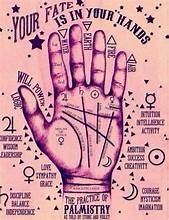Palmistry

Palmistry, also known as chiromancy or palm reading, is the practice of interpreting the lines, shapes, and markings on a person’s hands to gain insight into their character, personality traits, potential future events, and overall life path. While palmistry is not scientifically proven and is considered a pseudoscience by many, it has cultural and historical significance in various societies.
Here are some reasons why palmistry may hold significance for individuals:
- Cultural and Historical Tradition: Palmistry has a long history dating back thousands of years, with roots in ancient civilizations such as the Babylonians, Egyptians, Greeks, and Chinese. It has been practiced in various forms across different cultures and has been passed down through generations as a traditional art.
- Personal Insight and Self-Reflection: Many people find value in palmistry as a tool for self-reflection and introspection. By examining their own hands or having their palms read by a practitioner, individuals may gain insights into their strengths, weaknesses, and potential life paths. This self-awareness can lead to personal growth and self-improvement.
- Entertainment and Curiosity: Palmistry is often practiced for entertainment purposes at events such as fairs, parties, and psychic readings. People may seek out palm readings out of curiosity or as a fun activity with friends. While not taken seriously by everyone, palmistry can still provide a source of enjoyment and fascination.
- Guidance and Decision-Making: Some individuals turn to palmistry for guidance when facing important decisions or life challenges. They may seek advice from a palm reader on matters such as relationships, career choices, or health concerns. While palmistry should not be relied upon as the sole basis for decision-making, some people find comfort in receiving insights and perspectives from a practitioner.
- Spiritual and Metaphysical Beliefs: For those who hold spiritual or metaphysical beliefs, palmistry may be seen as a means of tapping into cosmic energies or universal truths. Practitioners may interpret the lines and markings on the hands as reflections of spiritual principles or karmic influences. Palmistry can be integrated into broader belief systems such as astrology, numerology, or alternative healing practices.
Overall, the significance of palmistry varies from person to person and is influenced by cultural background, personal beliefs, and individual experiences. While some dismiss it as superstition or pseudoscience, others find value in the insights and guidance it offers. Ultimately, whether one believes in palmistry or not, its enduring popularity speaks to its role as a cultural phenomenon and a source of fascination for many.